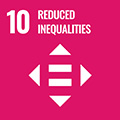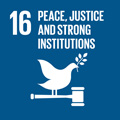- Docente: Andrea Ropa
- Credits: 12
- SSD: M-FIL/05
- Language: Italian
- Teaching Mode: Traditional lectures
- Campus: Bologna
-
Corso:
First cycle degree programme (L) in
Communication Sciences (cod. 8885)
Also valid for First cycle degree programme (L) in Communication Sciences (cod. 5975)
-
from Sep 16, 2024 to Dec 16, 2024
Learning outcomes
At the end of the course, the student is familiar with the main production routines of news machine, specially referred to the development of daily press, the online journalism, the kind of work, the professional code of conduct and the business models. The student also is able to select the information in order to create news, paying attention to the most recent techniques of multimedia journalism.
Course contents
The aim of the course is to provide the notions and tools necessary to recognise and understand the variety of journalistic languages and underlying communication pacts observable in different media (print, radio, television, web). The main production models linked to the information machine are therefore analysed, with a view to outlining the framework of a modern journalism, capable of dealing with the profound changes in socio-cultural processes that have taken place in recent years.
Particular attention is given to the role, function and professional identity of journalists, the genres of their work, writing and titling techniques, the logic of newsworthiness, deontology and professional ethics, the comparative analysis of the Italian and international media system, the innovations brought to journalism by the digital environment, with reference to the new tools and new information professions, the use of social media both as sources of news and as tools for building a community with an information medium at its centre, and the hypothesis of future developments in information.
Readings/Bibliography
Compulsory texts for exams:
-
Barbano A. (in collaborazione con V. Sassu), Manuale di giornalismo, Laterza, 2012
-
Pulitzer J., Sul giornalismo, Bollati Boringhieri, 2009
Non-mandatory texts but highly recommended, especially for non-attending:
-
Allotti P., Quarto potere. Giornalismo e giornalisti nell'Italia contemporanea, Carocci, 2017
-
Bergamini O., La democrazia della stampa - Storia del giornalismo, Laterza, 2013
-
Lorusso A. M., Postverità, Laterza, 2018
-
Mazzocco D., Giornalismo online - Crossmedialità, blogging e social network: i nuovi strumenti dell'informazione digitale, Centro Documentazione Giornalistica, 2018 (terza edizione)
-
McIntyre L., Post-verità, UTET Università, 2019
-
Mezza M., Giornalismi nella rete. Per non essere sudditi di Facebook e Google, Donzelli, 2015
-
Smith B., Traffic, Altrecose, 2024
-
Sorrentino C., Splendore S., Le vie del giornalismo. Come si raccontano i giornalisti italiani, Il Mulino 2022
-
Splendore S., Giornalismo ibrido. Come cambia la cultura giornalistica italiana, Carocci, 2017
-
Triani G. (a cura di), Giornalismo aumentato. Attualità e scenari di una professione in rivoluzione, Franco Angeli, 2017
-
Vanni C., Diario incompleto (di giornalismo e di moda), Mondadori Electa, 2023
Teaching methods
The course alternates traditional theoretical lectures with classroom presentations by journalists and experts in the field of communication and screenings of multimedia documents relating to the subject matter. Students will be asked to actively participate, collaborating in the drafting and titling of journalistic articles in preparation for the exam, which will be carried out in the classroom during the course. For this reason, attendance is strongly recommended.
Assessment methods
The 2024/2025 Journalism Communication exam consists of a written test, which is carried out on the computer and aims to verify the student's writing skills, learning of journalistic techniques, understanding of the two mandatory texts and the ability to critically reflect on the main themes/concepts.
It consists of writing and titling a newspaper article on a current topic chosen by the teacher and answering two 'open' questions: one related to the textbook and one to the other mandatory text. The newspaper article will count for a maximum of 18 points (60% of the total) and the two questions for a maximum overall score of 12 points (40% of the total).
The student has one or more agency takes in which he or she finds all the information he or she needs: it is a matter of selecting them and putting them in the right logical and chronological order, organizing them in a news report appropriately titled. To prepare for the exam, it is advisable to be well informed, paying particular attention to the news reports of the days immediately preceding. It is also necessary to have an excellent knowledge of the newsworthiness criteria and of the writing and titling techniques illustrated in class, in the manual and in the notes made available by the teacher on the Virtuale platform.
The maximum time for completing the test is four hours. The use of dictionaries is permitted but not that of personal technological devices of any kind (pc, tablet, smartphone, smartwatch, headphones, USB sticks, hard disk). The teacher allows you to refuse the exam grade only once.
Erasmus students can take the test in English, as an alternative to Italian.
Students with DSA or temporary or permanent disabilities: it is recommended to contact the responsible University office in good time (https://site.unibo.it/studenti-con-disabilita-e-dsa/it): it will be their responsibility to propose any adaptations to the students concerned, which must however be submitted, 15 days in advance, to the approval of the teacher, who will evaluate the opportunity also in relation to the educational objectives of the course.
Teaching tools
The course makes use of the computer and multimedia tools available in the classrooms of the Department of Arts, via Azzo Gardino 23.
Office hours
See the website of Andrea Ropa
SDGs




This teaching activity contributes to the achievement of the Sustainable Development Goals of the UN 2030 Agenda.
